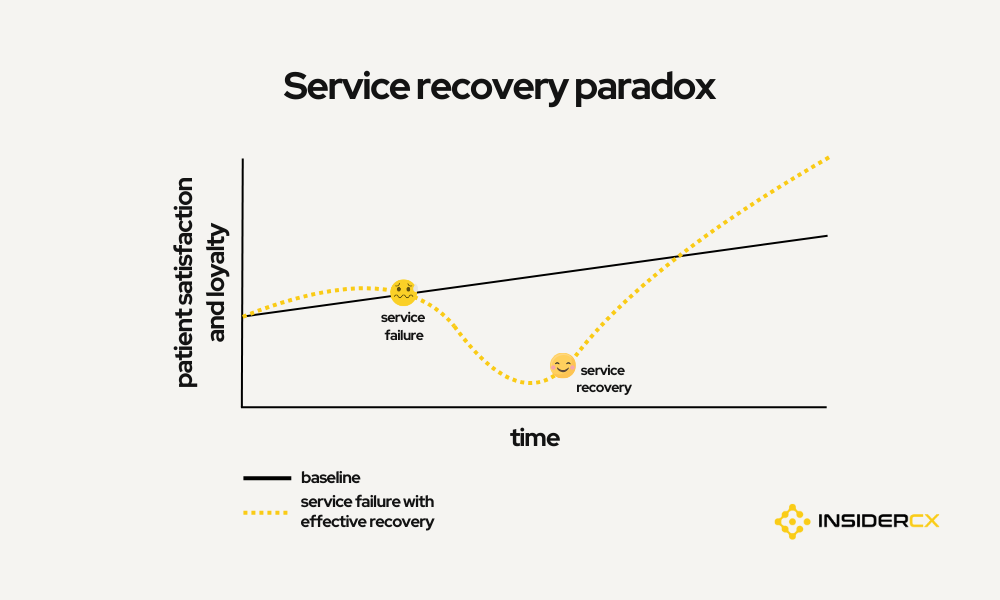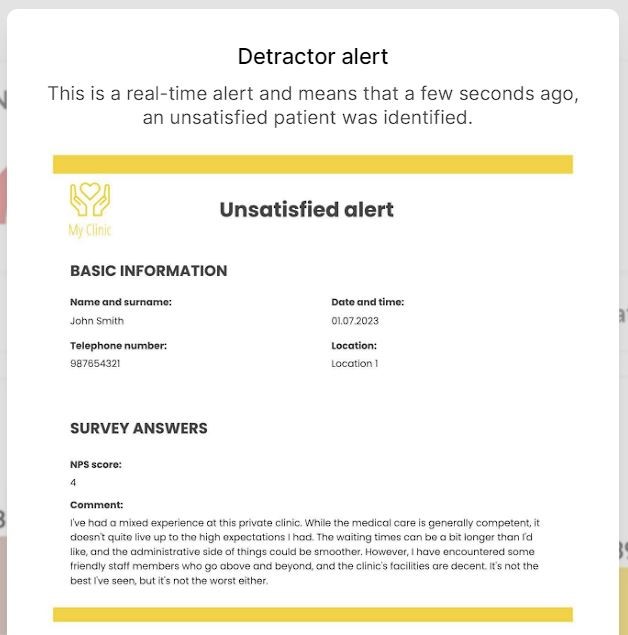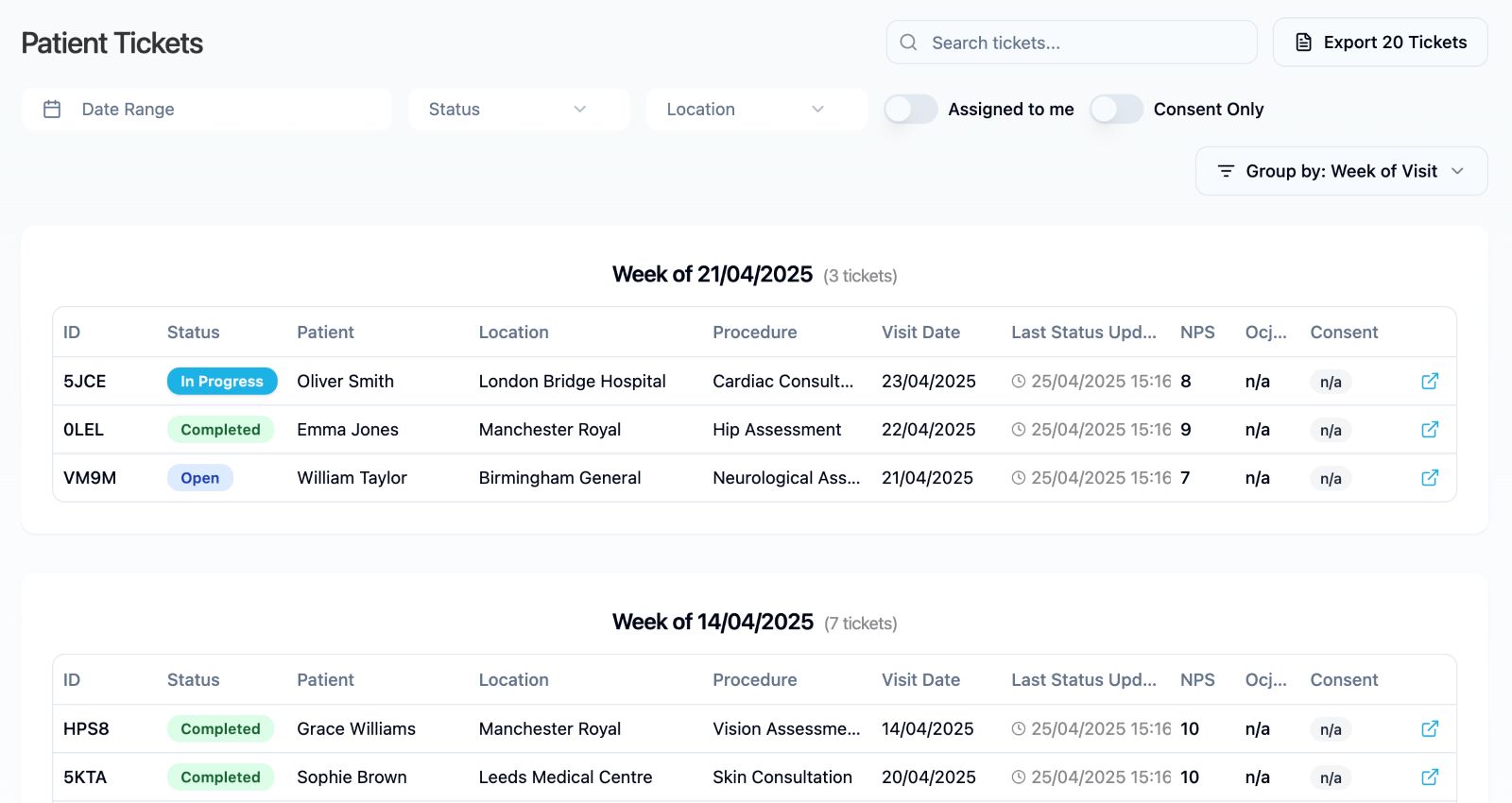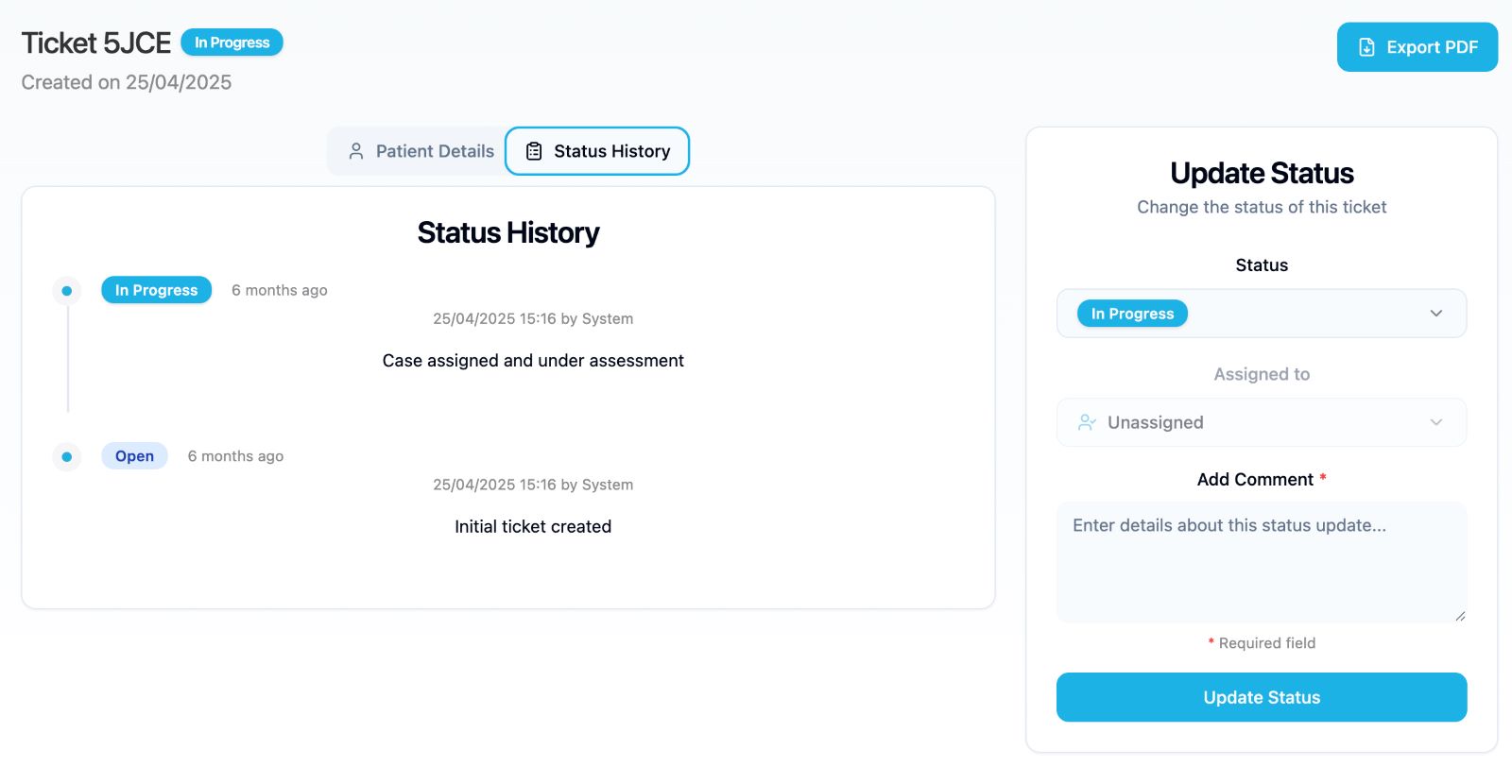Getting a patient complaint from time to time is inevitable. What separates the best clinics from the rest is how they manage those complaints.
All too often, valuable feedback gets buried in inboxes, missed in spreadsheets, or discussed informally without a clear resolution. Important insights slip through the cracks, patients feel ignored, and teams lose visibility into what went wrong — or how often it’s happening.
That’s where a patient ticketing system comes in. Just like in other service-oriented industries, ticketing in healthcare provides a structured way to handle complaints: assigning responsibility, tracking resolution, and turning that feedback into constant improvement.
Let’s explore how a ticketing system transforms complaint handling into an organised, insight-driven process — and how that process looks inside InsiderCX.
Why healthcare teams need a digital ticketing system
Managing patient complaints must go beyond damage control. A digital ticketing system gives you a structured way to catch recurring problems — like long wait times, communication breakdowns, or front-desk issues — and implement effective changes.
At the core of this system is centralised complaint handling. Instead of chasing down scattered notes or forwarded emails, every complaint — whether it comes from a feedback form, survey, or front-desk interaction — should be captured and tracked in one place. This centralisation allows teams to categorise issues, assign them to the right person, and follow up.
A digital system also introduces accountability and visibility. Each complaint becomes a tracked ticket with an owner, a timestamp, and a resolution status. No more guesswork about who’s handling what, or whether a case was resolved.
With these foundations in place, clinics can set clear response and resolution goals, aligning them with internal quality standards, regulatory expectations, or even accreditation requirements — timely complaint handling is often mandatory for compliance.
On top of that, resolving complaints in a timely and visible manner builds trust with patients. When people feel heard and see that action was taken, it strengthens their relationship with your clinic, even after a negative experience. This is known as a service recovery paradox.

Key features to look for in a patient ticketing system
For healthcare providers, sensitivity, speed, and compliance are non-negotiables. A strong patient complaint management system should include the following features:
- Automatic ticket creation: Negative feedback or low survey scores should trigger a ticket automatically, eliminating manual oversight and ensuring every issue is captured in real time.
- Routing and escalation: Complaints must reach the right person or department quickly. Look for systems with intelligent routing rules and automatic escalation for unresolved or urgent issues.
- Status tracking: Visibility is key. Teams should be able to see at a glance whether a case is new, in progress, or resolved — and who is responsible at each step.
- Custom SLAs and targets: You should be able to define internal service standards, such as response within 24 hours or resolution within 5 business days. This is done to ensure consistency and meet clinical or regulatory expectations.
- Response templates: Built-in templates help staff respond professionally and consistently, while maintaining a compassionate tone. Bonus points for systems that support multi-channel communication (apps, SMS, portal messaging).
- Reporting and analytics: Dashboards should offer simple, actionable insights: resolution times, volume by category, recurring complaint themes, etc..
- Security and compliance: The system must be GDPR-compliant (or HIPAA-compliant in the U.S.) and offer precise controls for data access, retention, and erasure.
- Necessary integrations: Your ticketing system should integrate with existing platforms like EHRs, CRM tools, and patient feedback systems — creating a seamless experience for both staff and patients.
These are the fundamentals — and InsiderCX brings them together within a larger patient experience ecosystem.
How the InsiderCX ticketing module works
InsiderCX is a patient experience platform with a focus on feedback collection and management. It’s an integrated solution that helps clinics respond quickly, track outcomes, and improve care quality based on what patients actually say.
Here’s how our patient ticketing module works.
Seamless integration with feedback collection
When a patient leaves a low NPS score or submits a negative comment, InsiderCX automatically detects the issue using sentiment analysis and opens a ticket. The responsible team member receives a detractor alert in real time.

This ensures that no concern goes unnoticed or unaddressed.
Intelligent complaint routing and management
Each ticket is routed to the correct team or department — whether that’s the quality manager, a department head, or the front-desk team. The issue is then tracked through every stage of its lifecycle, with complete transparency on who owns it, what actions have been taken, and whether it’s been resolved.

You can drill down into each ticket to uncover additional information and see who did what as the ticket progressed towards completion.
SLAs and accountability
InsiderCX allows clinics to define custom response and resolution targets, helping teams meet internal standards and external compliance goals. If a case approaches its deadline without resolution, the system can automatically escalate or send reminders, keeping everything on track.
Faster communication with personalised response templates
To reduce response time and ensure consistent tone, InsiderCX offers prefilled response suggestions. Staff can personalise messages while maintaining professionalism, empathy, and alignment with clinic standards.
Simple, actionable insights
A clean reporting dashboard highlights what matters most:
- Complaint volume over time
- Average time to resolution
- Most common complaint categories
- Resolution rates and follow-up success.
This allows managers to quickly identify problem areas, monitor trends, and take action where it matters.
Deep compliance and trust
InsiderCX is fully GDPR-compliant and built with healthcare-grade security standards.
Each partnership we sign with a clinic includes a data processing and protection agreement that outlines transfer protocols, data access controls, and erasure policies — giving you and your patients complete peace of mind.
InsiderCX healthcare ticketing system in action
Imagine the following scenario:
A patient leaves a low NPS score and says that their visit felt disorganized, focusing on excessive wait time. With InsiderCX in place, the system flags that response, creates a ticket, and sends a detractor alert to the quality manager.
At Arsano Medical Group, this meant that the clinic’s central quality team was alerted across its network, enabling quick response (not just locally, but at the group level).
With the InsiderCX ticketing module up and running, the quality manager can acknowledge complaints within hours and assign them to the relevant clinic staff. The team tracks progress, logs communications, and ensures steps are taken to resolve the issue. Once the case is resolved, it is closed, with full auditability for later review.
As we speak, these tickets build into a data-backed view of recurring problems, enabling Arsano to identify systemic issues (e.g. scheduling bottlenecks, communication lapses) and raise standards across its entire network.
To see the tangible results that grew out of this partnership, read our case study on the Arsano Medical Group.
Turn patient complaints into quality improvements
Every ticket tells a story. When those stories are collected, categorised, and reviewed over time, patterns start to emerge. You are able to distinguish between isolated incidents and recurring problems.
Clinics that use ticketing systems effectively strive to use complaint data to:
- Redesign flawed processes
- Improve staff training
- Update patient communication materials
- Strengthen cross-departmental coordination.
Most importantly, they close the loop with patients. A complaint that results in meaningful change doesn’t damage your reputation, it strengthens it. Patients are more likely to trust clinics that demonstrate accountability and a commitment to getting better.
Over time, this transforms the culture of the organisation. Complaints are no longer something to fear — they’re fuel for building a safer, more responsive, and more patient-centred care.
Redefining how we respond to patients
A well-built healthcare ticketing system doesn’t just organise complaints, it transforms how your clinic listens, responds, and grows. With InsiderCX, feedback becomes a catalyst for change: every concern acknowledged, every issue tracked, every patient shown that their voice leads to real action.
It’s a system built not just for efficiency, but for empathy — and for clinics ready to turn everyday complaints into lasting trust.
Ready to see how InsiderCX can help you handle patient complaints efficiently? Book a demo today and discover the power of an integrated patient feedback and ticketing platform.




